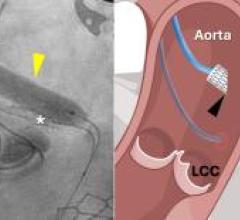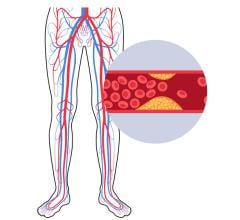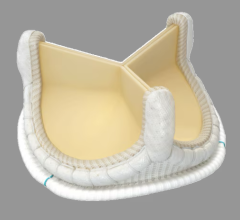July 1, 2008 - The impact of surgeons' annual aortic volume and other prognostic indicators have been revealed in early outcomes of ruptured abdominal aortic aneurysm (RAAA) repair in a recent study from the University of Pittsburgh Medical Center.
Details of the study have been published in the July issue of the Journal of Vascular Surgery.
Fourteen different surgeons performed consecutive open RAAA repairs on 170 patients between January 2001 and June 2007 at the Center. Results showed an operative mortality rate (in-hospital or 30 days post operation, whichever is later) of 38.2 percent, including 29 intra-operative deaths. Factors that were independent predictors of perioperative deaths included the patient's advanced age as well as postoperative intestinal bowel ischemia; however the most striking variable was the surgeon's annual elective aortic aneurysm volume.
"Without significant differences in the pre- and intra-operative variables among the patients, those who were operated by high-volume surgeons (average annual elective aortic volume of more than 20) had a significantly lower 30-day mortality rate of 21.6 percent, compared with low-volume surgeons (average elective annual aortic volume less or equal to 20) who had a 30-day mortality rate of 42.1 percent," said Jae-Sung Cho, M.D. co-author and associate professor of surgery in the division of vascular surgery at the center. "Neither the surgeons' experience (number of years in practice) nor the annual RAAA volume was found to be predictors of death."
Patients with postoperative intestinal bowel ischemia had a lower 30-day survival rate as compared with patients who did not (48.1 percent vs. 15.3 percent), and an increased intraoperative fluid and blood product usage also was associated with this condition. The mean age of the patients was 74.5-8.1 and it was found that octogenarians had a lower 30-day survival rate of 49.0 percent vs. 70.5 percent than their younger counterparts.
Although the researchers agreed that very little can be done to change postoperative intestinal bowel ischemia or age, the findings in this study suggested possible ways to improve patient outcome. "The improved early outcomes of surgeons with high-volume AAA have strong implications for training, emergency staffing needs and alternative treatment strategies," added Dr. Cho.
"The medical community should first focus on regionalization of RAAA repair centers to Centers of Excellence with high volume," said Dr. Cho. "Regionalization also would enhance vascular residents' experience and potentially increase their comfort level with RAAA. High-volume surgeons with low mortality rates should be sought out, and a team dedicated to RAAA developed, which may be an effective way of improving surgical outcomes.""
Dr. Cho said these suggestions would help achieve improved patient survival as well as specialty training in the "endovascular era" with rapidly diminishing open vs. endovascular aneurysm repair case experiences. "Using endovascular technology for the treatment of RAAA has not been shown to confer survival benefits over open repair," reported Dr. Cho. "Even if this were the case, endovascular applicability for RAAA, at present, is limited from the standpoint of both institutional and surgeons' capabilities as well as patients' anatomic and hemodynamic conditions. It appears that direct open repair is still the mainstay of therapy for RAAA and concerted efforts should be made to improve surgical outcomes in all RAAA repairs."
Dr. Cho said RAAA remains a highly lethal problem with death rates ranging from 45 percent to 55 percent, even after surgical repair. If one includes pre-hospital deaths, the overall death rates for all RAAA patients are around 90 percent. Despite advances in surgical techniques and perioperative care, he said that surgical results after open repairs of RAAA have not improved over the past 50 years.
For more information: www.VascularWeb.org, www.jvascsurg.org


 January 15, 2026
January 15, 2026 









